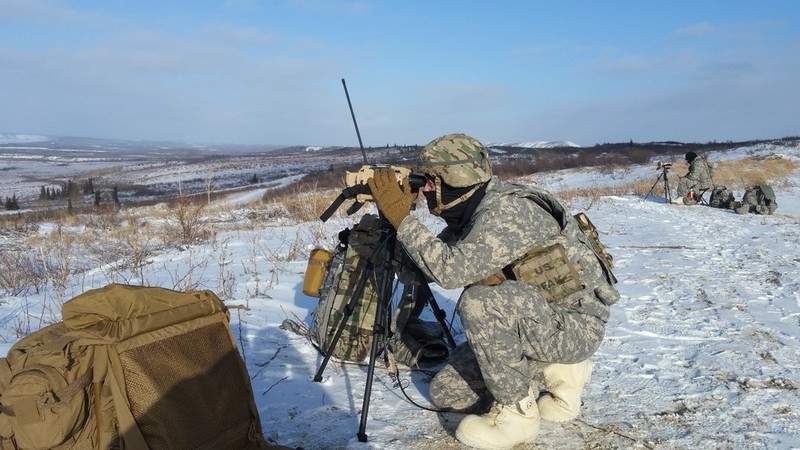
The US Army’s field artillery soldiers have tested the new Joint Effects Targeting System Target Laser Designation System (JETS-TLDS) at the Cold Regions Test Center in Alaska, US.
Designed to identify friend or foe in the battlefield, the JETS-TLDS precision targeting system features three components. These include a hand-held target location module (HTLM), precision azimuth and vertical angle module (PAVAM), and laser marker module (LMM).
The operational test on the targeting device was carried out by soldiers from Battery D, 2nd Battalion, 8th Field Artillery stationed at Fort Wainwright, in collaboration with the Battery D, 2nd Battalion, 377 Parachute Field Artillery Regiment based at Anchorage, Alaska, US.
During the test, the team used an infrared imager (IRI) and colour day imager (CDI) to detect and identify vehicles and personnel at various distances.
The JETS-TLDS was also tested in a simulated urban environment, where soldiers cleared multiple buildings and occupied rooftops and rooms to identify opposing forces in the city.
Battery D, 2-8 Field Artillery staff sergeant Christopher McKoy said: “The JETS system is definitely much lighter and a lot easier to pick up and learn all the functions quickly.
How well do you really know your competitors?
Access the most comprehensive Company Profiles on the market, powered by GlobalData. Save hours of research. Gain competitive edge.

Thank you!
Your download email will arrive shortly
Not ready to buy yet? Download a free sample
We are confident about the unique quality of our Company Profiles. However, we want you to make the most beneficial decision for your business, so we offer a free sample that you can download by submitting the below form
By GlobalData“It is so simple that you can pick it up and learn it in five minutes.”
As part of the exercise, soldiers were set at randomised objective rally points (ORPs), ranging from 500m to 2km from their observation posts (OP), where they carried out tactical movements between the points.
On occupying their individual OP, soldiers would find targets around them and determine exactly where they were at using the JETS-TLDS targeting system.
Following this, the Precision Fires-Dismounted (PF-D) application was used to develop a fire mission and send it to a simulated company fire support team (FIST).
On an average, the soldiers succeeded in sending 40 fire missions after every ten hours.


